Proper dog harness sizing ensures comfort, safety, and control․ Measure your dog’s chest and neck accurately to match size charts for the best fit․ Always prioritize comfort and mobility;
What is a Dog Harness?
A dog harness is a wearable device designed to securely fit around a dog’s chest and shoulders, providing better control and comfort compared to traditional collars․ It distributes force across the dog’s body, reducing strain on the neck․ Harnesses are ideal for dogs that pull, have respiratory issues, or require additional support․ They come in various styles, such as no-pull, car safety, and padded options, catering to different needs․ A well-fitted harness ensures your dog’s comfort and safety, making it an essential tool for walks, training, or travel․ Proper sizing is crucial for optimal functionality and your dog’s well-being․
Why Choosing the Right Size Matters
Selecting the correct harness size is crucial for your dog’s comfort and safety․ A too-tight harness can cause discomfort or restrict movement, while a loose fit may lead to lack of control․ Proper sizing ensures even weight distribution, preventing strain on sensitive areas like the neck and shoulders․ It also helps prevent health issues such as skin irritation or breathing difficulties․ Additionally, the right fit enhances the effectiveness of the harness, whether for walking, training, or car safety․ Always prioritize accurate measurements and adjustments to ensure your dog enjoys a comfortable and secure experience․
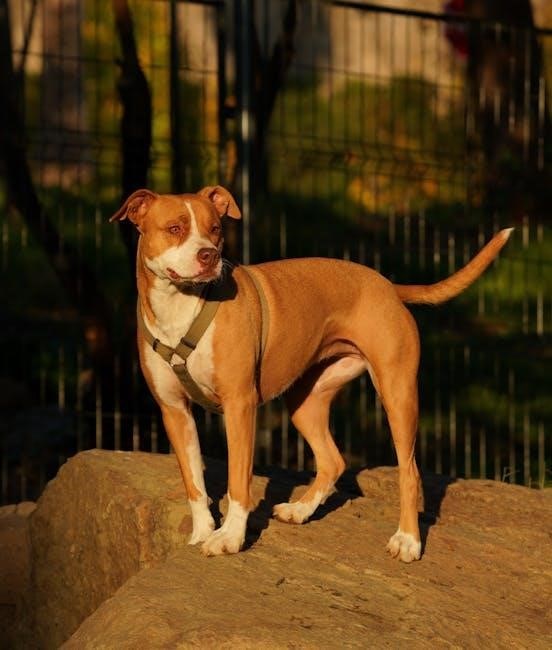
Importance of Proper Fit
Ensuring a proper fit guarantees your dog’s comfort and safety, preventing health issues while providing effective control during walks and activities․
Safety and Comfort for Your Dog
A properly fitted harness ensures your dog’s safety and comfort․ It prevents choking and restricted movement, allowing your dog to walk naturally․ A snug fit avoids skin irritation and discomfort․ Correct sizing distributes weight evenly, reducing strain on the neck and shoulders․ For small dogs, one finger should fit between the harness and skin, while larger dogs may need two fingers․ Always measure your dog’s chest girth accurately and compare it to the size chart․ A well-fitting harness promotes enjoyable walks and prevents potential health issues․ Regular adjustments ensure ongoing comfort and safety as your dog grows or gains/loses weight․
Preventing Health Issues
A poorly fitted harness can lead to health issues like skin irritation, joint pain, and breathing difficulties․ Ill-fitting harnesses may cause chafing or restrict movement, affecting your dog’s posture and comfort․ Proper sizing ensures even weight distribution, preventing strain on the neck and shoulders․ Regular adjustments are crucial, especially for growing puppies or dogs with changing body conditions․ Measure your dog’s chest and neck accurately to avoid tight spots․ A well-fitting harness promotes healthy mobility and prevents long-term musculoskeletal problems․ Always prioritize precise measurements and compare them to size charts for optimal fit and your dog’s well-being․
Ensuring Effective Control
A properly fitted dog harness ensures effective control during walks, preventing pulling or escape attempts․ A snug yet comfortable fit distributes force across the chest and shoulders, avoiding choking or discomfort․ This promotes better behavior and reduces strain on both you and your dog․ Accurate measurements are key to achieving the right balance for control․ A well-sized harness minimizes distractions and enhances training, making outings more enjoyable․ Proper fit ensures your dog responds to commands without resistance, fostering a safer and more enjoyable walking experience for both pet and owner alike․
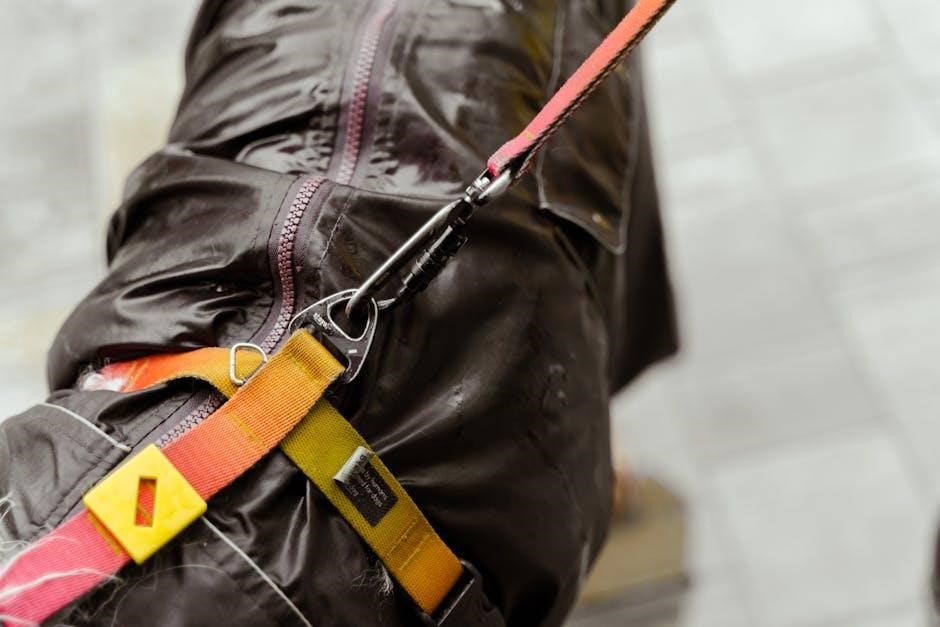
How to Measure a Dog for a Harness
Measure your dog’s chest girth just behind the front legs using a tape measure․ Ensure the fit is snug but allows for one finger between the tape and skin for comfort and accuracy․
Tools Needed for Measuring
A flexible tape measure is essential for accurately measuring your dog’s chest and neck․ Choose a soft, non-retractable tape measure to ensure comfort and precise readings․ Treats or toys can help keep your dog calm and still during the process․ Having a second person to assist may also be helpful․ Ensure the tape measure is snug but not tight, as this will provide the most accurate measurements․ Avoid using a rigid ruler or other inflexible tools, as they may not conform to your dog’s body shape․ Proper tools are key to ensuring a perfect fit for the harness․
Step-by-Step Measuring Guide
Begin by locating the widest part of your dog’s chest, just behind the front legs․ Wrap the tape measure around this area, ensuring it’s snug but not tight․ Record this measurement as the chest girth․ Next, measure the neck circumference by wrapping the tape measure just below the narrow part of the neck․ Note this as the neck size․ For some harnesses, you may also need to measure the length of your dog’s back or the belly circumference․ Always refer to the manufacturer’s sizing chart to match these measurements accurately․ Proper alignment ensures the harness fits comfortably and securely․
How to Ensure Accurate Measurements
For precise measurements, use a flexible tape measure and ensure it’s snug but not tight․ Measure the chest girth at its widest point, just behind the front legs․ The tape should allow one finger’s space for small dogs and two for larger breeds․ Keep your dog standing straight and calm during measurement․ Avoid twisting the tape measure, as this can lead to inaccuracies․ Double-check your measurements by taking them multiple times and comparing them to the manufacturer’s size chart․ This ensures a proper fit and prevents discomfort or restricted movement for your dog․

Understanding Harness Size Charts
Harness size charts guide you in selecting the right fit based on girth and neck measurements, ensuring comfort and proper support for your dog․
How to Read a Size Chart
Reading a dog harness size chart involves matching your dog’s measurements to the chart’s girth, neck, and chest circumference ranges․ Locate your dog’s girth measurement, typically the widest part of their chest, and compare it to the chart․ Ensure the neck measurement aligns with the chart’s guidelines, as some harnesses include neck sizes․ Pay attention to weight ranges as a secondary reference․ Accurate measurements are crucial for a proper fit․ If your dog’s size falls between two options, consider the adjustable features of the harness․ Always double-check the manufacturer’s sizing guide for specific instructions․
Key Measurements for Harness Sizing
The most critical measurements for harness sizing are your dog’s chest girth and neck circumference․ The chest girth is measured around the widest part of the chest, just behind the front legs․ The neck measurement is taken just below the narrowest part of the neck․ Some harnesses also require the length of the back and chest bridge․ These measurements ensure a snug, comfortable fit without restricting movement․ Always compare these measurements to the manufacturer’s size chart to select the correct size for your dog․ Accurate measurements are essential for optimal comfort and functionality․
Breed-Specific Size Charts
Breed-specific size charts are essential for ensuring the perfect fit, as different breeds have unique body types․ For example, Bulldogs and Pugs require harnesses with deeper chest measurements, while Dachshunds need longer, narrower designs․ Huskies and Greyhounds, with their athletic builds, may fit better in harnesses tailored for muscular breeds․ Some manufacturers create breed-specific charts using data from thousands of dogs across various breeds․ Always consult a size chart specific to your dog’s breed to ensure optimal comfort and functionality․ This approach minimizes sizing errors and guarantees a secure, comfortable fit tailored to your dog’s unique proportions․
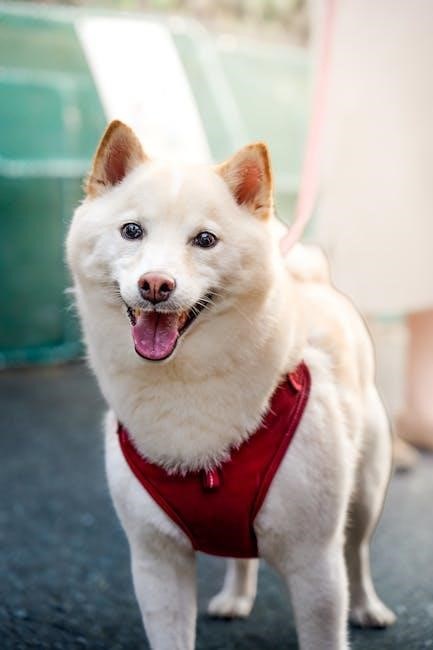
Types of Dog Harnesses
Types of dog harnesses include no-pull, car safety, and padded comfort options․ Each serves specific purposes, ensuring proper fit and functionality for various activities and breeds․
No-Pull Harnesses
No-pull harnesses are designed to discourage dogs from pulling on the leash, making walks more enjoyable․ They typically feature a front-clip attachment that redirects your dog’s attention․ These harnesses are ideal for strong pullers or dogs in training․ Proper sizing is crucial to ensure comfort and effectiveness․ The chest plate should fit snugly but not restrict movement․ Look for adjustable straps and durable materials for long-lasting use․ When paired with positive reinforcement training, no-pull harnesses can significantly improve walking behavior․ Always ensure a proper fit to avoid discomfort or chafing during use․
Car Safety Harnesses
Car safety harnesses are designed to keep your dog secure during travel, reducing distractions and ensuring safety․ They typically feature sturdy straps and quick-release buckles for easy use․ Proper sizing is crucial; the harness should fit snugly around your dog’s chest and shoulders․ Measure your dog’s girth and compare it to the manufacturer’s size chart․ Look for crash-tested models for added reliability․ Ensure the harness is tightly secured to the seatbelt to prevent movement during sudden stops․ Avoid sizing based solely on weight, as body shape can vary․ Always follow the manufacturer’s fitting instructions for optimal safety and comfort during car rides․
Padded and Comfort Harnesses
Padded and comfort harnesses prioritize your dog’s well-being with soft, cushioned straps that reduce friction and prevent chafing․ These harnesses are ideal for dogs with sensitive skin or those who spend extended periods in their harness․ Proper sizing is essential to ensure the padding provides comfort without restricting movement․ Measure your dog’s chest and compare it to the size chart, ensuring a snug yet comfortable fit․ Adjustable straps allow for customization, while the padding distributes force evenly․ Look for breathable materials to keep your dog cool during long walks or adventures, ensuring both comfort and practicality․
Designer and Stylish Harnesses
Designer and stylish harnesses blend fashion with functionality, offering vibrant colors, patterns, and premium materials like velvet or suede․ While they prioritize aesthetics, proper sizing remains crucial․ Measure your dog’s chest and neck to ensure a comfortable, secure fit․ Stylish harnesses often feature adjustable straps and breathable fabrics for added comfort during walks or outdoor adventures․ Although they focus on style, they should not compromise on safety or practicality․ Pairing fashion with function, these harnesses allow your dog to stand out while ensuring a perfect fit tailored to their unique size and needs․

Sizing Tips for Different Breeds
Small breeds need snug fits to prevent slipping, while large and giant breeds require sturdy, adjustable harnesses for comfort and support, ensuring proper sizing for their unique frames․
Small Breed Harness Sizing
For small breeds, precise sizing is crucial to ensure comfort and mobility․ Measure the chest girth just behind the front legs, ensuring the harness isn’t too tight or loose․ Small breeds typically range from 10 to 18 inches in chest circumference․ Choose lightweight, breathable materials to prevent discomfort․ Adjustable straps are essential for a secure fit․ Avoid bulky designs that may restrict movement․ Regularly check the fit as small dogs grow quickly․ Proper sizing prevents chafing and ensures your small dog can move freely and comfortably during walks or playtime․
Medium Breed Harness Sizing
For medium breeds, proper sizing ensures a balance between comfort and control․ Measure the chest girth just behind the front legs, typically ranging from 18 to 28 inches․ Ensure the harness fits snugly but allows for two fingers of space․ Consider your dog’s activity level—padded harnesses for comfort during long walks or no-pull designs for training․ Adjustable straps provide flexibility for growth and seasonal changes․ Always refer to the manufacturer’s size chart for accurate fitting․ A well-fitted medium breed harness promotes safe, enjoyable outings and prevents potential discomfort or health issues over time․
Large Breed Harness Sizing
For large breeds, proper harness sizing is crucial to support their strength and comfort․ Measure the chest girth, typically ranging from 24 to 35 inches, ensuring a snug fit without restricting movement․ Choose durable, heavy-duty materials to handle their weight and energy․ Padded areas and wide straps help distribute pressure evenly, preventing discomfort or joint strain․ Adjustable straps allow customization for a secure fit․ Always consult the manufacturer’s size chart and consider your dog’s activity level․ A well-fitted harness ensures control during walks and prevents potential health issues associated with poor support․ Prioritize comfort and durability for long-term satisfaction․
Giant Breed Harness Sizing
Giant breeds require careful harness sizing to ensure comfort and support․ Measure the chest girth, typically 28-40 inches, for an accurate fit․ Opt for durable, heavy-duty materials with wide, padded straps to distribute weight evenly and prevent discomfort․ Adjustable straps allow customization, crucial for their large frames․ Ensure the harness doesn’t restrict movement, promoting joint health․ Consider the dog’s activity level and purpose of the harness․ Proper sizing prevents chafing and ensures control during walks or training․ Prioritize comfort and durability to support their massive size and strength, ensuring a secure and enjoyable experience for both the dog and owner․
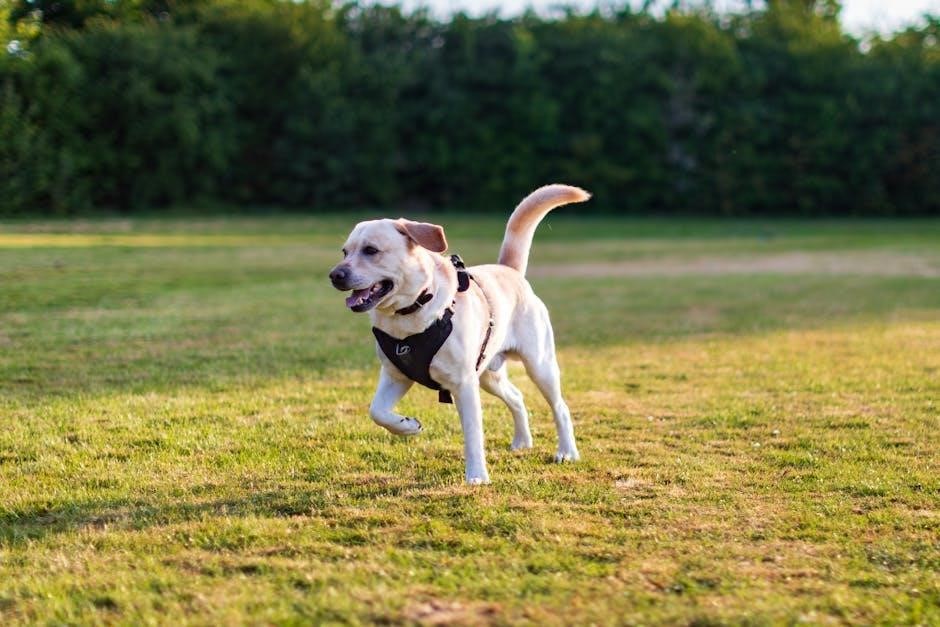
Factors Affecting Harness Fit
Factors like a dog’s weight, body type, seasonal fur changes, and growth stages impact harness fit, requiring regular adjustments for optimal comfort and support․
Dog’s Weight and Body Type
A dog’s weight and body type significantly influence harness fit․ While weight provides a baseline, body type—such as muscular, slender, or barrel-chested—affects how the harness sits․ Breeds vary widely in shape, so a universal approach doesn’t work․ For example, a slender dog may require a different fit than a stocky one of the same weight․ Relying solely on weight can lead to sizing errors, as body structure determines girth and chest measurements․ Accurate sizing ensures the harness doesn’t restrict movement or cause discomfort, making it essential to consider both factors for optimal fit and comfort․
Seasonal Changes and Fur Type
Seasonal changes and fur type impact dog harness fit․ Dogs with thick coats may need a larger size during shedding seasons, while shorter fur requires a snugger fit․ Breeds with double coats, like Siberian Huskies, may need adjustments as their fur thickens in winter․ Measuring during different seasons ensures the harness remains comfortable․ Fur type also matters; long-haired dogs may require more room to prevent matting․ Accounting for these factors ensures the harness stays comfortable and functional year-round, adapting to your dog’s natural changes without compromising mobility or safety․
Growth Stages of Puppies
Puppies grow rapidly, making regular harness adjustments essential․ Measure your puppy every few months to ensure a comfortable fit․ A harness that’s too tight can restrict movement and cause discomfort, while one that’s too loose may not provide control․ Choose an adjustable harness to accommodate growth spurts․ Consider starting with a smaller size and gradually increasing as your puppy develops․ Proper fit during growth stages prevents health issues and ensures your puppy remains comfortable and secure throughout their developmental phases, supporting their active lifestyle as they mature․
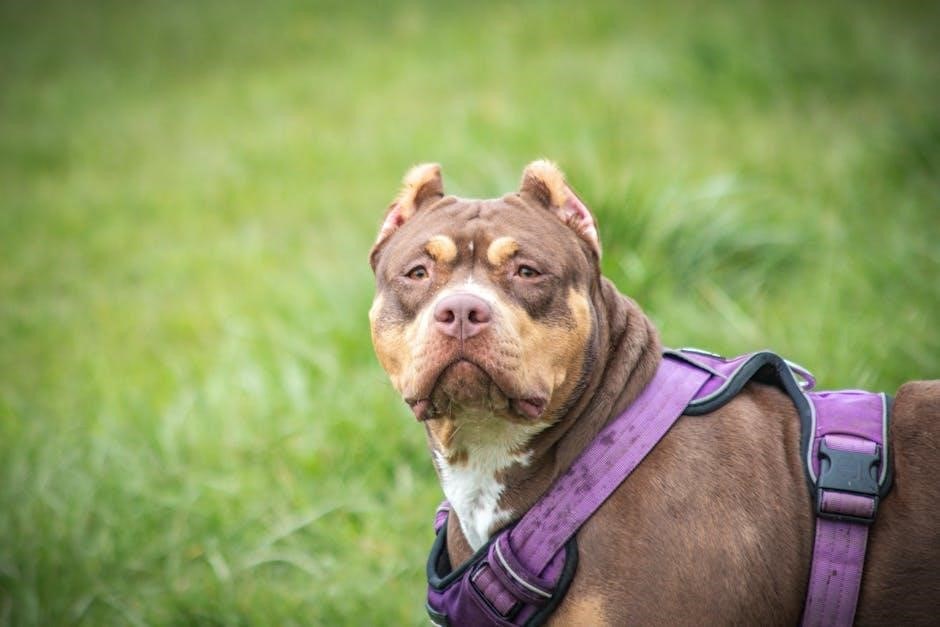
Common Mistakes to Avoid
Common mistakes include relying solely on weight, ignoring chest measurements, and not adjusting the harness properly․ Ensure accurate measurements and proper fit for your dog’s comfort and safety․
Reliance Solely on Weight
Relying only on your dog’s weight for sizing is a common mistake․ Body type, muscle structure, and breed differences mean two dogs of the same weight can have varying chest and neck measurements․ For example, a muscular dog and a slender dog with the same weight will require different harness sizes․ Always measure your dog’s chest and neck circumference for accurate sizing, as weight alone does not guarantee the correct fit․ Manufacturers provide size charts based on measurements, not just weight, to ensure comfort and safety for your dog․
Ignoring Chest Measurements
Ignoring chest measurements is a critical error when sizing a dog harness․ The chest girth, measured just behind the front legs, is essential for ensuring proper fit․ A harness that is too tight can restrict movement and cause discomfort, while one that is too loose may not provide adequate control․ Accurate chest measurements are necessary to match the harness size chart, ensuring the straps sit correctly without causing pressure points․ Neglecting this step can lead to an ill-fitting harness, potentially causing health issues or safety risks during walks or activities․ Always measure your dog’s chest to guarantee a secure and comfortable fit․
Not Adjusting the Harness Properly
Failing to adjust a dog harness correctly can compromise both comfort and safety․ Proper adjustment ensures the harness sits snugly without restricting movement or causing pressure points․ To test the fit, you should be able to slip two fingers between the harness and your dog’s skin for larger breeds, or one finger for smaller dogs․ Neglecting this step can lead to an overly tight or loose harness, which may cause discomfort, chafing, or even impede your dog’s mobility․ Regularly check and adjust the fit, especially as your dog grows or gains/loses weight, to ensure optimal comfort and functionality․
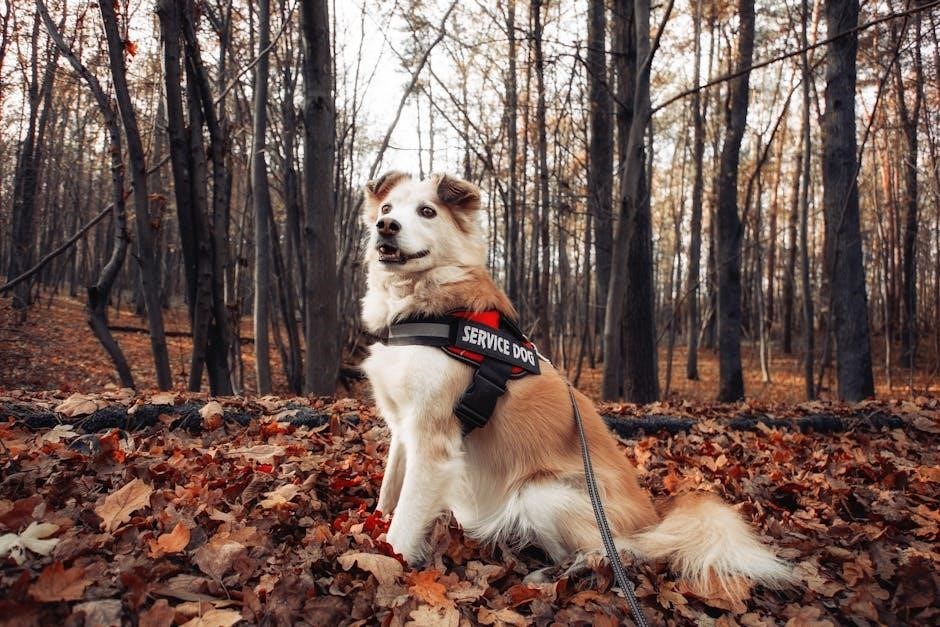
How to Choose the Right Harness Type
Identify your dog’s needs and match the harness type to their lifestyle․ Consider activities, comfort, and durability to ensure the best fit for your dog’s specific requirements․
Identifying Your Dog’s Needs
Identifying your dog’s needs is crucial for selecting the right harness․ Consider their lifestyle, activity level, and behavior․ For active dogs, durable, breathable materials are ideal․ If your dog pulls, a no-pull harness can provide better control․ For car travel, a safety harness ensures security․ Padded harnesses are best for dogs with sensitive skin or joint issues․ Assess your dog’s size, weight, and any medical conditions that may affect their comfort․ Understanding these factors ensures you choose a harness that supports their comfort, safety, and specific requirements, making walks and activities enjoyable for both you and your dog․
Matching Harness Type to Activity
Choosing the right harness type for your dog’s activity level is essential․ For daily walks, a lightweight, breathable harness is ideal․ If your dog pulls, a no-pull harness provides better control․ For hiking or long walks, opt for a padded harness for added comfort․ Car safety harnesses are designed for secure travel, while training harnesses focus on functionality․ Consider your dog’s primary activities to select a harness that supports their needs․ Whether it’s walking, running, or exploring, the right harness ensures comfort, safety, and enjoyable experiences for both you and your dog․ Always prioritize durability and comfort for active lifestyles․
Material and Durability Considerations
Material and durability are crucial when selecting a dog harness․ Nylon and polyester are popular for their strength and water resistance․ For comfort, padded harnesses with breathable mesh are ideal․ If your dog enjoys swimming, opt for a quick-drying material․ Reflective elements enhance visibility during nighttime walks․ Neoprene and padded foam provide extra cushioning for long walks․ Consider your dog’s lifestyle and activities—active dogs need durable, abrasion-resistant materials․ Ensure the harness is well-constructed with sturdy buckles and adjustable straps for a secure fit․ High-quality materials ensure longevity and comfort, making the harness a worthwhile investment for you and your dog․
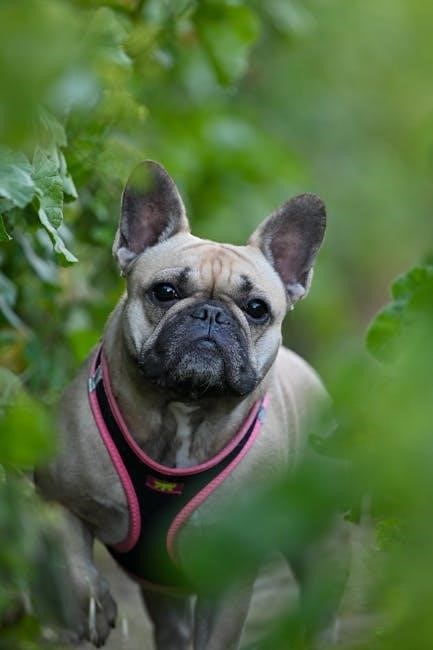
Adjusting the Harness for the Perfect Fit
Adjust the harness straps and buckles to ensure a snug fit․ For smaller dogs, two fingers should fit between the harness and skin․ Ensure freedom of movement and avoid tightness․ Regularly check and adjust the fit as your dog grows or changes weight․
Step-by-Step Adjustment Guide
Start by placing the harness on your dog and ensure the straps are evenly aligned․ Tighten the chest plate first, ensuring it sits comfortably behind the front legs․ Adjust the shoulder straps next, allowing for a full range of motion․ Check the neck straps, ensuring they aren’t too tight or loose․ Use the two-finger rule for smaller breeds and one-finger for larger dogs․ Finally, test the fit by gently tugging the leash to ensure the harness doesn’t shift or cause discomfort․ Regular adjustments may be needed as your dog grows or gains/loses weight․
How to Test the Fit
A well-fitting harness should feel snug but not restrictive․ Start by slipping one to two fingers between the harness and your dog’s skin․ Ensure your dog can move freely without the harness riding up or digging into sensitive areas․ Gently tug the leash to check for any shifting or gapping․ Your dog should display no signs of discomfort or resistance․ If the harness feels too tight or loose, adjust the straps accordingly․ Regularly reassess the fit, especially as your dog grows or experiences seasonal changes in weight or fur thickness․ A proper fit ensures both safety and comfort during walks or activities․
When to Reassess the Fit
Regularly reassess your dog’s harness fit to ensure ongoing comfort and safety․ Check the fit after washing, as materials may shrink or stretch slightly․ Seasonal changes can cause fur thickness to vary, affecting how the harness sits․ Weight fluctuations, whether gain or loss, can also alter the fit․ Additionally, puppies grow quickly, so their harness may need frequent adjustments․ Always ensure the harness is snug but not restrictive, allowing one to two fingers of space between the harness and your dog’s skin․ This ensures your dog can move freely without discomfort or risk of the harness shifting during activity․
Proper dog harness sizing is crucial for comfort and safety․ Regularly reassess fit due to growth or seasonal changes, ensuring optimal adjustment for your dog’s well-being and security․
Proper dog harness sizing is essential for comfort, safety, and control․ Measure your dog’s chest and neck accurately, and compare to size charts․ Avoid relying solely on weight․ Choose harness types based on your dog’s needs, whether for walking, car safety, or no-pull training․ Ensure the harness fits snugly but allows freedom of movement․ Regularly reassess fit, especially for puppies or dogs with seasonal coat changes․ Proper adjustment prevents health issues and ensures effective control․ Always prioritize your dog’s comfort and mobility for a happy, stress-free experience․
Final Tips for Harness Sizing
Always measure your dog’s chest and neck for accuracy, and compare to size charts․ Avoid relying solely on weight, as body type varies․ Choose harnesses based on your dog’s activity needs, ensuring proper adjustment for comfort and mobility․ Regularly check fit, especially for growing puppies or dogs with seasonal coat changes․ Opt for adjustable straps to accommodate growth or weight fluctuations․ Ensure the harness sits snugly but allows freedom of movement․ For small breeds, one finger should fit between the harness and skin, while larger breeds may need two․ Prioritize durability and comfort for long-term use․
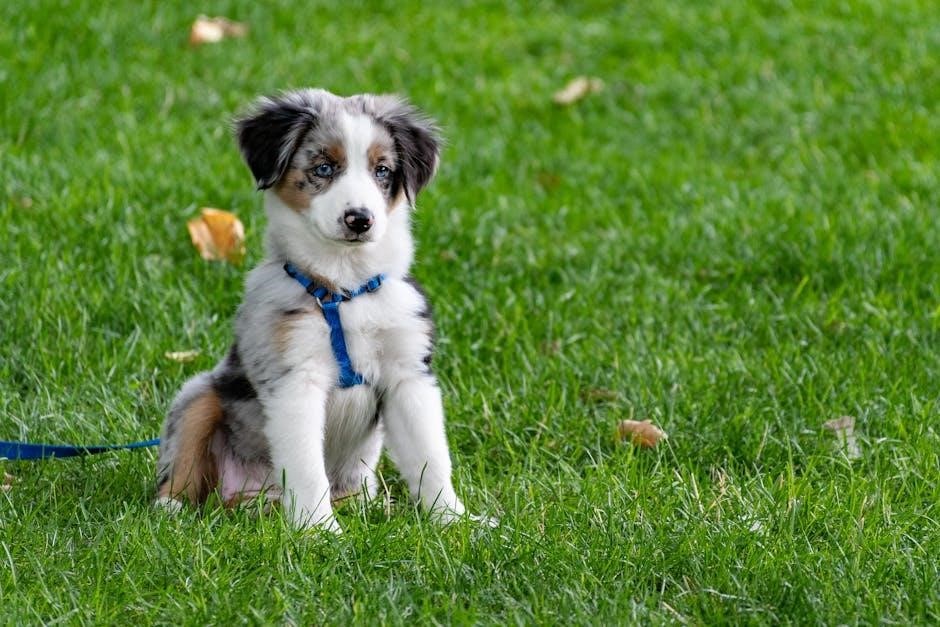
No Responses